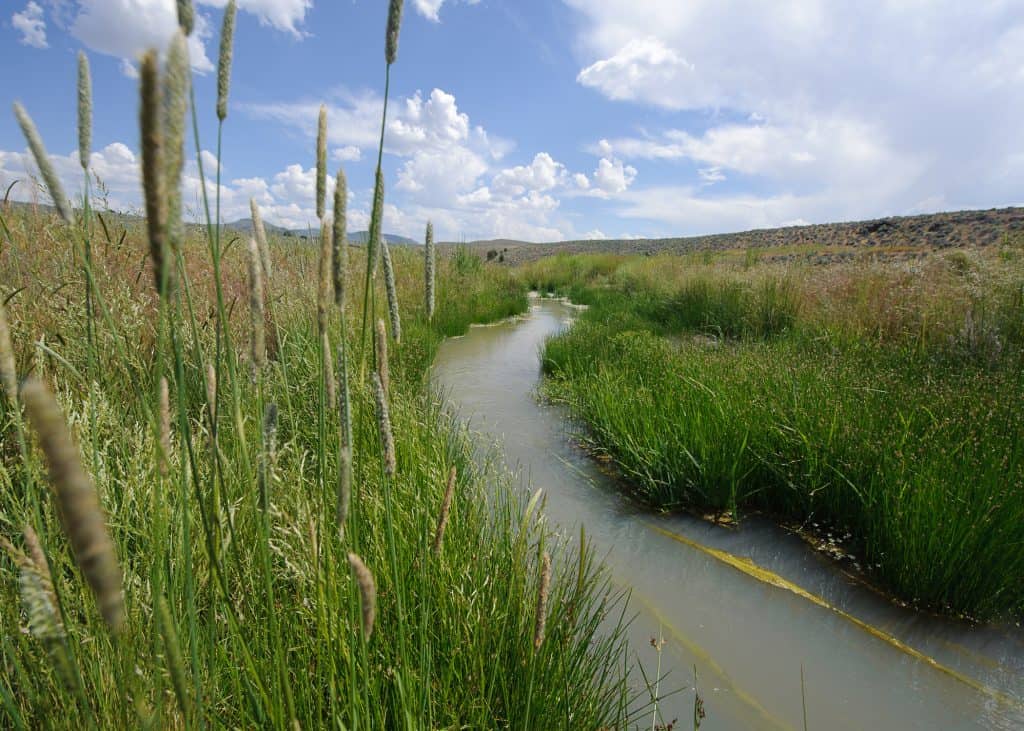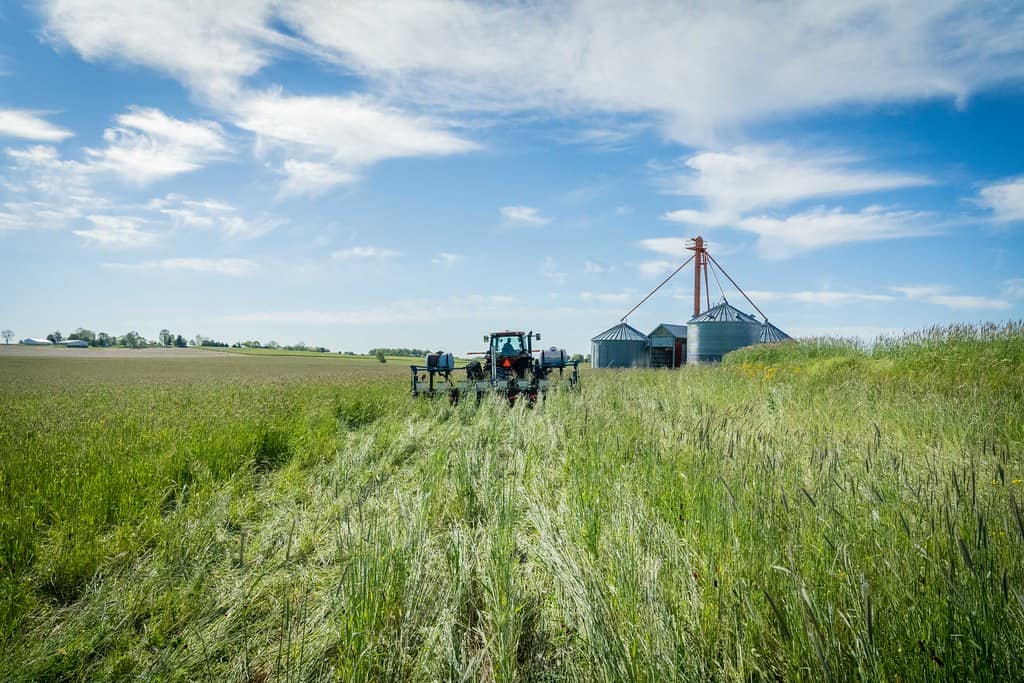Evaluating Ecosystem Services of Summer Cover Crop Mixtures for Organic Cabbage Production
Project Director: Anne Carey, Iowa State University
Project Overview
Cover crop “cocktails,” or mixtures containing three or more species, are gaining popularity in organic vegetable production due to their potential to increase ecosystem services and enhance crop production. Research suggests that these mixtures may be more beneficial than single species cover crops, enhancing weed suppression, providing plant-available nitrogen, and enhancing soil biological activity.
However, further research is needed to understand individual species’ performance within mixtures and their ability to deliver multifunctionality. The dynamics of crop competition can impact certain species within a cover crop mixture, thus an understanding of each species’ growth characteristics and competitive interactions is essential.
This study aims to address the research gap in understanding the multifunctional impact of summer cover crop mixtures on organic vegetable production in the Upper Midwest. The study utilized summer cover crop species known to perform well in Upper Midwest conditions.

Farmer Takeaways
- Cover crop biomass productivity did not increase with the number of species in the mixtures, and weed suppression from mixtures was similar to, but not superior to, the most effective monocultures.
- Browntop millet may exert dominance over other functional groups in a cover crop mixture, but can increase overall biomass production and provide weed suppression.
- Cowpea was the least productive and least weed suppressive cover crop species, but it produced high-quality tissue with superior nutrient concentrations and helped increase the quality of mixtures.
- Cover crops with a lower C:N ratio may result in greater N mineralization than those with a high C:N ratio.
Project Objectives and Approach
Compare the performance of four warm-season cover crop species alone and in mixtures
The research took place in 2022 and 2023 at the Iowa State University Horticulture Research Station in Ames, IA, on certified organic land.
The cover crop functional groups assessed in this study included grasses, legumes, and nonlegume broadleafs. The monoculture treatments included: (1) browntop millet (grass), (2) buckwheat (nonlegume broadleaf), (3) cowpea (legume), and (4) sunnhemp (legume). The cover crop mixture treatments included: (1) a three-way mixture of browntop millet, buckwheat, and cowpea (3-CP); (2) a three-way mixture of browntop millet, buckwheat, and sunnhemp (3-SH); and (3) a four-way mixture of all four species (4-W).
Cover crops were seeded in June, and biomass samples were collected from each treatment in July immediately before termination/incorporation.
Assess the ability of cover crop mixtures to suppress weeds, contribute N, increase crop yield, and enhance soil microbial habitat
Cabbage (Brassica oleracea var. Caraflex) was transplanted into the terminated cover crop plots in August and harvested mid-October. Cabbage heads (24 per treatment/rep/year) were then graded as marketable and nonmarketable due to insect damage or small size.
Soil samples were collected three times each year, to a depth of 15 cm. Soil samples were analyzed for nutrients, and permanganate oxidizable carbon (POXC) and microbial biomass carbon (MBC) as indicators of habitat for microorganisms. Anion exchange membranes (AEMs) inserted in the soil were used to quantify the NO3-N released from cover crop and soil mineralization during cabbage production.
Key Findings
Cover crop mixtures did not produce significantly more cover crop biomass than monocultures
Browntop millet and buckwheat monocultures produced the greatest cover crop biomass, and cowpea and sunnhemp monocultures produced the lowest. While mixtures were as productive as browntop millet (the best monoculture) in the first year, they did not ever exceed this productivity. Cover crop biomass productivity did not increase with the number of species in the mixtures.
Weed suppression is dependent on cover crop biomass production and performance, with cover crop mixtures performing similarly to the most effective monocultures
Grasses and nonlegume broadleaves were more effective at suppressing weeds than legumes in monoculture. Weed suppression was found to be negatively correlated with cover crop biomass; in other words, greater cover crop biomass elicited fewer weeds. Accordingly, the most productive cover crop treatments (browntop millet in 2022 and buckwheat in 2023) were the most effective at suppressing weeds. Weed suppression from cover crop mixtures was similar to, but not superior to, the most effective monocultures.
Individual cover crop performance within mixtures varies by species and functional group, with grasses tending to dominate/suppress legume performance
- Browntop millet (grass) exerted strong dominance in the cover crop mixtures. Several other studies have found highly productive grass species to exert strong interspecific competition in mixtures, resulting in legume suppression.
- Buckwheat (nonlegume broadleaf) was competitive against browntop millet, but did not suppress legumes.
- Cowpea (legume) was suppressed to a much greater degree than sunnhemp in mixtures. If incorporated into a mixture with browntop millet or other grass species, cowpea seeding rates should be maintained near the full seeding rate, or above 50 kg ha−1.
- Sunnhemp (legume) was competitive with browntop millet, and its low C:N ratio and high biomass production supported N contributions and weed suppression in cover crop mixtures.
C:N ratios of cover crop mixtures tended to be higher than those of the monocultures due to high proportions of the dominant grass cover crop species
The grass monoculture, browntop millet, had the highest C:N ratio (49:1), and the legume monocultures, cowpea and sunnhemp, had the lowest (<20:1). The C:N ratio of mixtures were greater than monocultures, which can be partly explained by the high proportion (~58%) of browntop millet in the mixtures.
Certain cover crops can scavenge nutrients better than cash crops, and when the residue is incorporated, supply a labile form of the nutrient for subsequent crop uptake (Fageria et al., 2005). In this study, cowpea produced high-quality tissue with superior micro- and macronutrient concentrations among monocultures and increasing mixture concentrations in 3-CP and 4-W.
Incorporating cover crop residues with high C:N ratios, such as browntop millet, may immobilize N and result in reduced cabbage yields
There was evidence of N immobilization* from browntop millet (BTM) in 2022, as NO3-N mineralization was lowest in BTM plots (C:N ratio of 49:1), and more than 50% of cabbage heads in BTM plots were classified as small.
- *N immobilization may occur when residues with a high C:N ratio are incorporated into the soil, due to the consumption of all/most plant-available N by microorganisms during residue decomposition.
Buckwheat, which had a slightly lower C:N ratio of 36:1, did not appear to result in N immobilization, as cabbage head sizes and yields were similar to yields from legume monocultures.
Cover crop mixtures may enhance microbial populations slightly, but additional research is needed
Significantly higher microbial biomass carbon (MBC) following cover crop mixtures than monocultures in 2022 (but not in 2023) provides partial evidence of an increase in microbial populations, and infers mixtures may offer a more beneficial habitat for soil microorganisms.
Resources
Carey, A. M., & Nair, A. (2025). Evaluating ecosystem services of summer cover crop mixtures for organic cabbage production. Renewable Agriculture and Food Systems, 40, e8.
Read MoreLocation
IowaCollaborators
Ajay Nair, Iowa State University
Region
Midwest
Topic
Soil Health, Crop Nutrient Management, Weed Management, Cropping Systems
Category
Vegetables/Fruits
Year Published
2025


